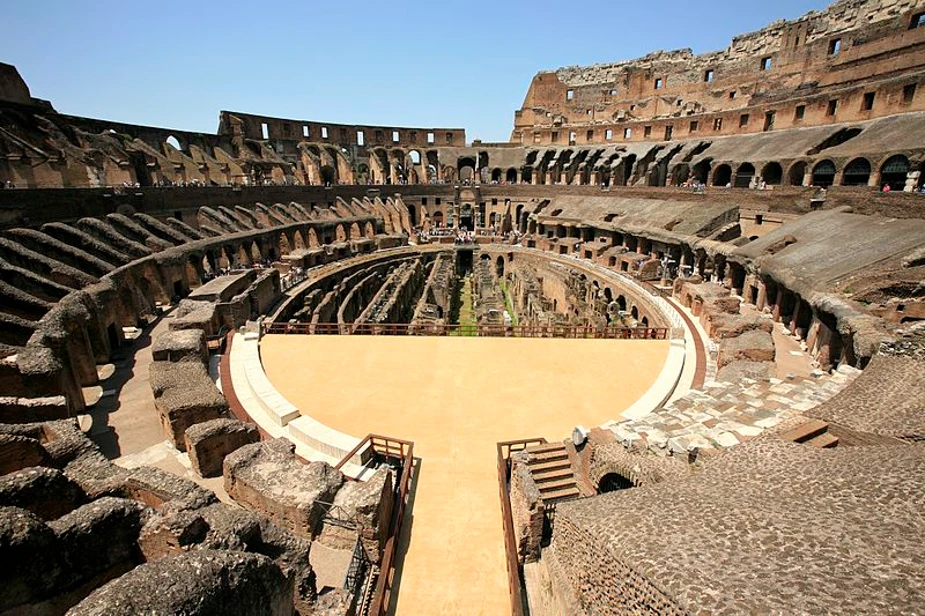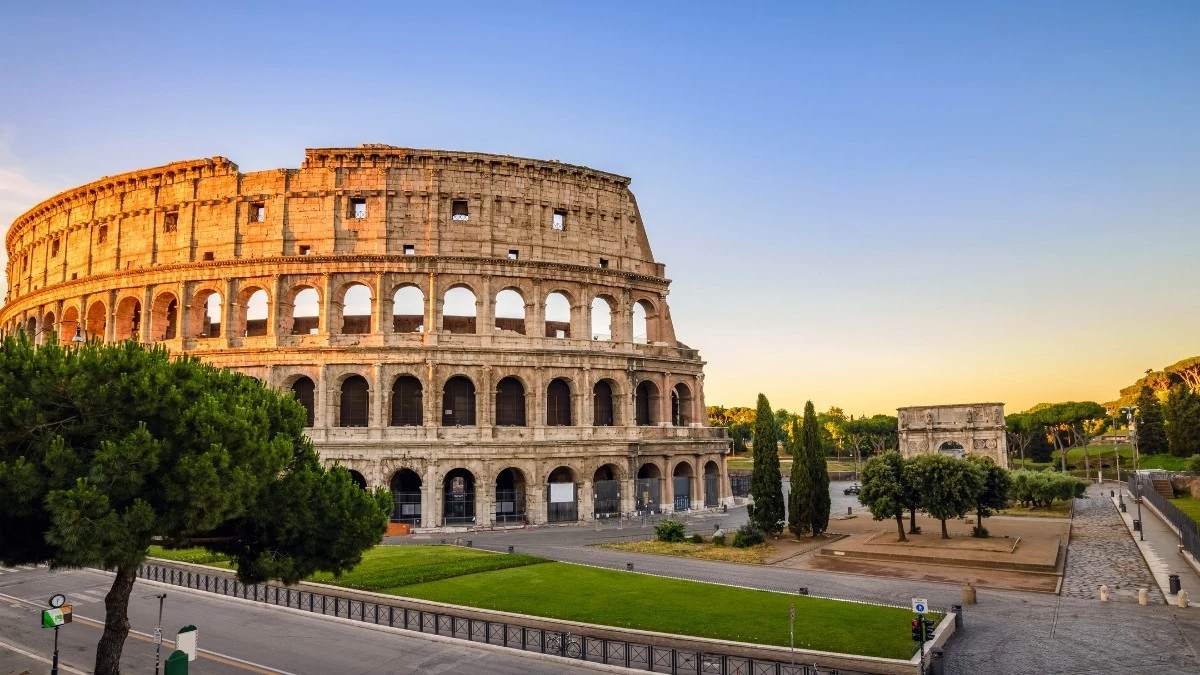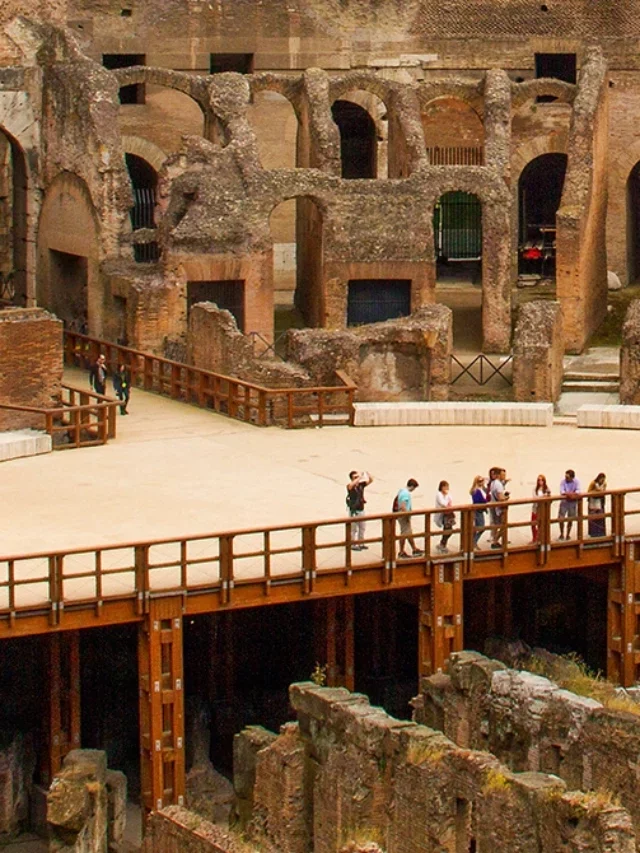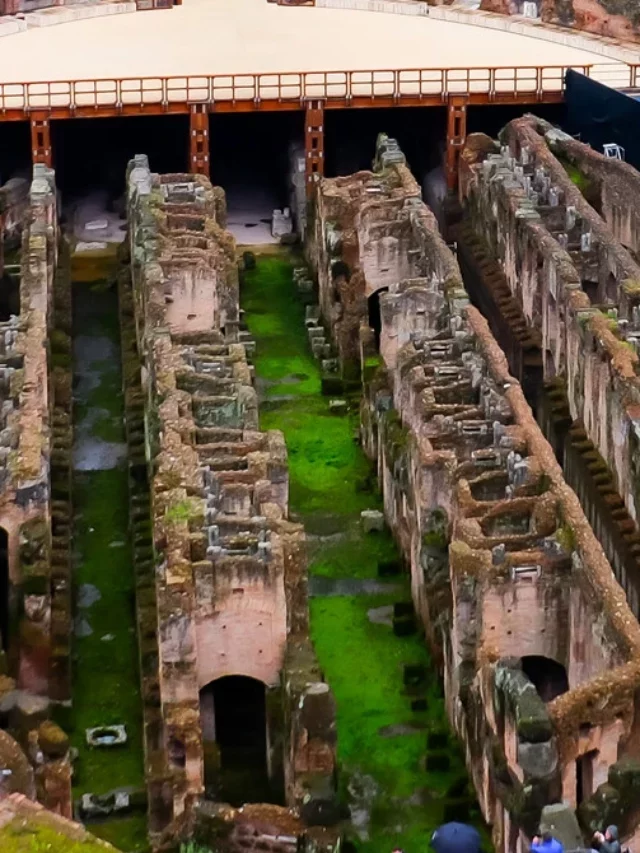Roman Colosseum
The Roman Colosseum, also known as the Flavian Amphitheatre, is a testament to ancient Rome’s grandeur and engineering prowess.
This iconic amphitheater was constructed in the heart of Rome and completed in AD 80.
Its colossal size and innovative architecture allowed it to host spectacular gladiatorial contests, animal hunts, and public spectacles, captivating audiences of up to 80,000 spectators.
As a symbol of Roman entertainment and culture, it remains a must-visit historical landmark, drawing millions of tourists worldwide each year to marvel at its impressive ruins.
But wait, there’s more! The origin of the Colosseum’s name holds a surprising twist. You will explore all these fascinating facts in this article.
Note: Book your tour tickets in advance to know more about its rich history. Enjoy priority access at just €54!
Historical Evolution
Different eras saw its change following its construction in 80 AD.
Until the late 5th century, gladiatorial combat and wild animal hunting were displayed here.
It evolved into a chapel and cemetery with homes and stores in the latter half of the 6th century.
The Frangipani family transformed it into a fortified castle in the 12th century.
The 1349 earthquake destroyed the Colosseum to a significant extent.
Historical highlights show significant structural stripping occurring between the 14th and 18th centuries.
Other buildings in Rome developed using these demolished construction components.
Various Popes and governments conducted many restoration efforts.
Between 2013 and 2016, extensive cleaning of the building walls took place.
Facts you must know
Being one of the most iconic ancient landmarks, the Colosseum is steeped in fascinating history. Here are some key facts to know about this impressive amphitheater:
Historical Significance
It was commissioned by Emperor Vespasian of the Flavian dynasty in AD 70-72 and completed in AD 80 by his successor, Titus.
The amphitheater was primarily used for gladiatorial contests, public spectacles, and mock sea battles.
Massive Dimensions
The attraction is an architectural marvel boasting a massive elliptical structure.
It measures about 189 meters long, 156 meters wide, and 48 meters tall, accommodating an estimated 50,000 to 80,000 spectators.
The Name Mystery
The ancient Roman structure we know as the Colosseum wasn’t always called that. It was originally named for the emperors who built it – the Flavian dynasty.
So, where does “Colosseum” come from? It likely comes from a giant statue of Emperor Nero that stood nearby!
Ingenious Design
The amphitheater’s innovative design features a complex system of ramps, corridors, and underground tunnels to facilitate the movement of gladiators, animals, and props between the arena and other sections.
Remarkable Construction
Constructed using concrete and sand, it showcases Roman’s engineering prowess. Its exterior was adorned with travertine limestone and marble, creating a magnificent facade that once dazzled onlookers.
Tragic Events
The monument hosted many events, from gladiator battles and animal hunts to reenactments of famous battles. Unfortunately, these spectacles often result in the loss of human lives and the extinction of some animal species.
Christian Martyrs
It also played a dark role in early Christian history, with numerous accounts of Christian martyrs facing persecution and execution within its walls.
Women in the Arena
While less common, women also participated in gladiatorial combat.
They were known as gladiatrices and were typically freeborn women or high-ranking slaves.
Decline and Restoration
The Colosseum fell into disrepair after centuries of use due to earthquakes and stone looting.
However, significant restoration efforts began in the 18th century, helping to preserve this ancient wonder for future generations.
Colosseum Underground and Arena

The sand-covered wooden Arena floor displayed animal battles and prisoner execution games in Rome.
The elites and emperors enjoyed these actions, while the ordinary people remained distracted.
You can see the fantastic view of the Underground Hypogeum from the remains of the Arena floor.
According to facts about the monument, Emperor Domitian later erected the Underground.
The Hypogeum included training grounds for gladiators, prisoner passages, and cells.
The Colosseum held Roman Catholic celebrations that increased its cultural and religious relevance.
According to the historical facts of the monument, close to four lakh people died on it’s sands.
They slaughtered about a million animals, such as wolves, bears, and lions.
For the Underground tour, book your tickets online in advance since they get sold out quickly.
Note: Do you prefer self-guided tours? We have you covered with our most recommended Colosseum self-guided tour which has the option for a video guide.
Exploring the Colosseum Today
Today, the Roman Colosseum stands as a symbol of ancient Rome’s grandeur, offering a captivating glimpse into the past and a vivid reminder of the glories and tragedies of ancient Roman civilization.
It stands as a UNESCO World Heritage Site, attracting millions of visitors each year.
What to Expect During Your Visit?
- Arena Floor: Imagine the roar of the crowd as you stand on the center stage of gladiatorial combat. Some tours even offer access to the arena floor beneath the stage.
- Seating Areas: Climb the tiers where spectators once cheered and. Think about how seating location reflected social status in ancient Rome – the closer you were to the action, the more important you were!
- Underground Chambers: Want to see where the gladiators waited before their fights? Some tours take you down to the network of tunnels beneath the arena, providing a glimpse into a hidden world.
What are the Tour Options?
- Standard Entry Tour: The standard entry tour is the most basic and affordable option, perfect for those who want a general overview of the attraction.
- Guided Tour: A guided tour typically covers the arena floor, the Cavea (seating areas), and the underground chambers, providing a comprehensive exploration.
- Self-Guided Tour: Choose a self-guided audio tour for flexibility, allowing you to focus on areas that pique your interest.
- The Underground Tour: Embark on a special Colosseum Underground tour to discover its hidden depths of the labyrinthine network of tunnels, chambers, and cages where gladiators waited for their fate.
- Night Tour: Opt for a special night tour for an eerie and unforgettable experience free from the daytime crowds.
Roman Colosseum’s History FAQs
Can anybody enter the Roman Colosseum?
Anybody can access the main portions of the attraction including the seating spaces, hallways, and Underground chambers. Due to current restoration work, some locations have restricted access.
Is the Colosseum a UNESCO World Heritage site?
Yes, in 1980, UNESCO recognized the Colosseum as a World Heritage site.
How did the Roman Colosseum change throughout time?
The Colosseum has endured natural calamities, theft, and neglect. It was a medium as a quarry for building materials and sustained earthquake damage.
Yet, initiatives were there to conserve and restore this important historical site
How was the Colosseum in Rome given its name?
The enormous statue of Emperor Nero that stood close to the amphitheater is likely where the word “Colosseum” came from.
The statue, the Colossus of Nero, was later taken down. But the ‘amphitheater’ or public theater retained its name.
When was the Colosseum in Rome constructed?
Emperor Vespasian ordered work to start on the Colosseum in 72 AD. His son Titus finished it in 80 AD it took eight years to complete the construction.
How big is the Colosseum in Rome?
Its central axis measures 620 feet (189 meters), and the minor axis measures 513 feet (156 meters).
How many lives ended on the Colosseum and the Arena floor?
The facts state that about 400,000 humans and one million animals died there. Such killings continued for centuries till such actions finally stopped.
Featured Image: Noppasin Wongchum


